Abstract
The application of sewage sludge to land may increase the concentration of heavy metals in soil. Of considerable concern is the effect of heavy metals on soil microorganisms, especially those involved in the biocycling of elements important to soil productivity. Bradyrhizobium japonicum is a soil bacterium involved in symbiotic nitrogen fixation with Glycine max, the common soybean. To examine the effect of metal-rich sludge application on B. japonicum, the MICs for Pb, Cu, Al, Fe, Ni, Zn, Cd, and Hg were determined in minimal media by using laboratory reference strains representing 11 common serogroups of B. japonicum. Marked differences were found among the B. japonicum strains for sensitivity to Cu, Cd, Zn, and Ni. Strain USDA 123 was most sensitive to these metals, whereas strain USDA 122 was most resistant. In field studies, a silt loam soil amended 11 years ago with 0, 56, or 112 Mg of digested sludge per ha was examined for total numbers of B. japonicum by using the most probable number method. Nodule isolates from soybean nodules grown on this soil were serologically typed, and their metal sensitivity was determined. The number of soybean rhizobia in the sludge-amended soils was found to increase with increasing rates of sludge. Soybean rhizobia strains from 11 serogroups were identified in the soils; however, no differences in serogroup distribution or proportion of resistant strains were found between the soils. Thus, the application of heavy metal-containing sewage sludge did not have a long-term detrimental effect on soil rhizobial numbers, nor did it result in a shift in nodule serogroup distribution.
Full text
PDF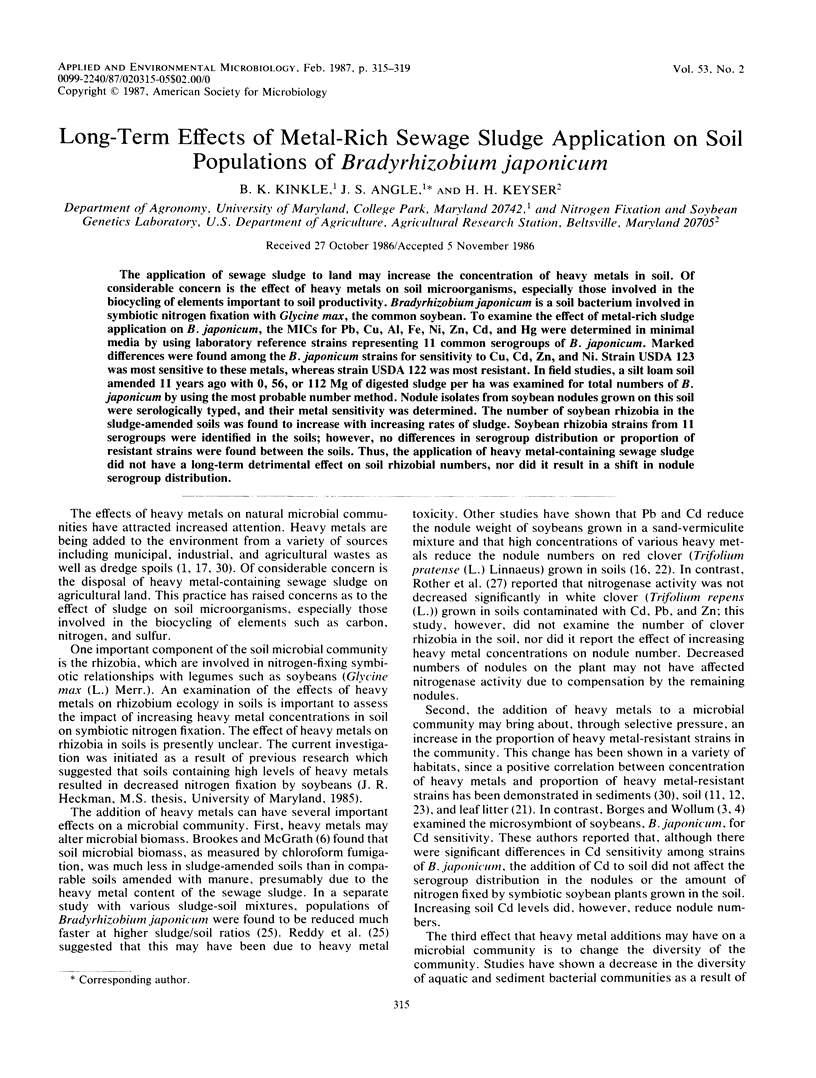
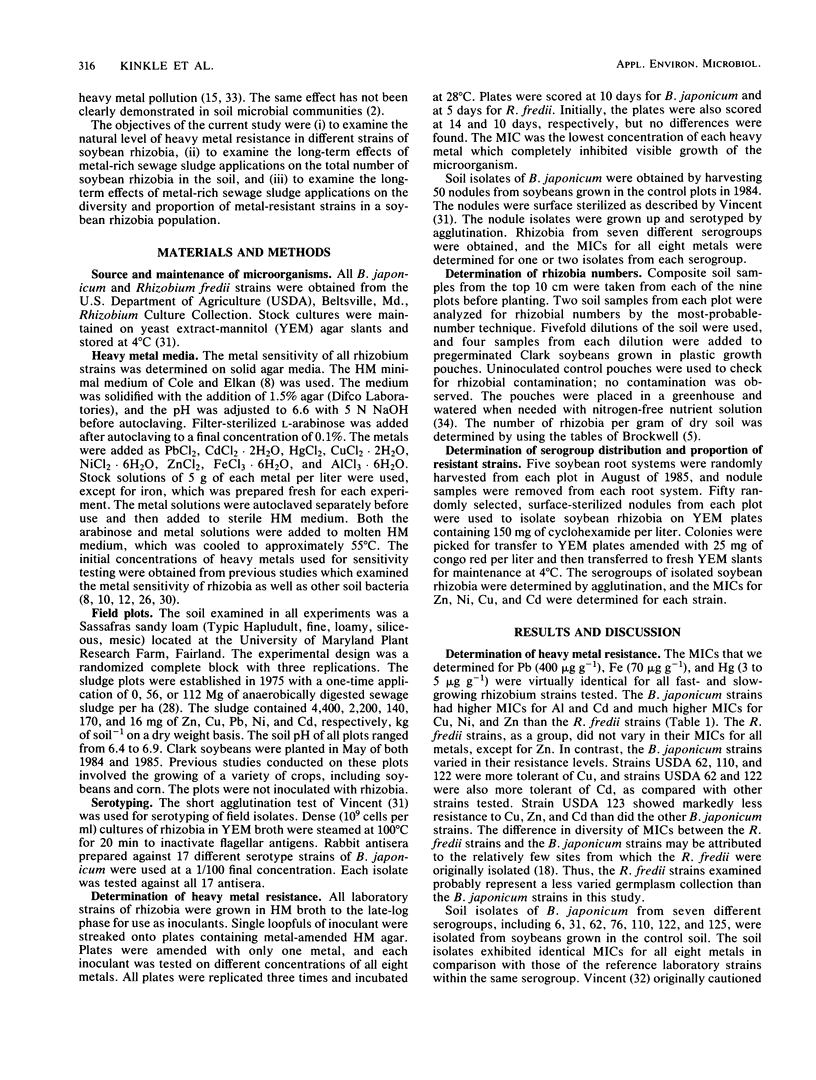
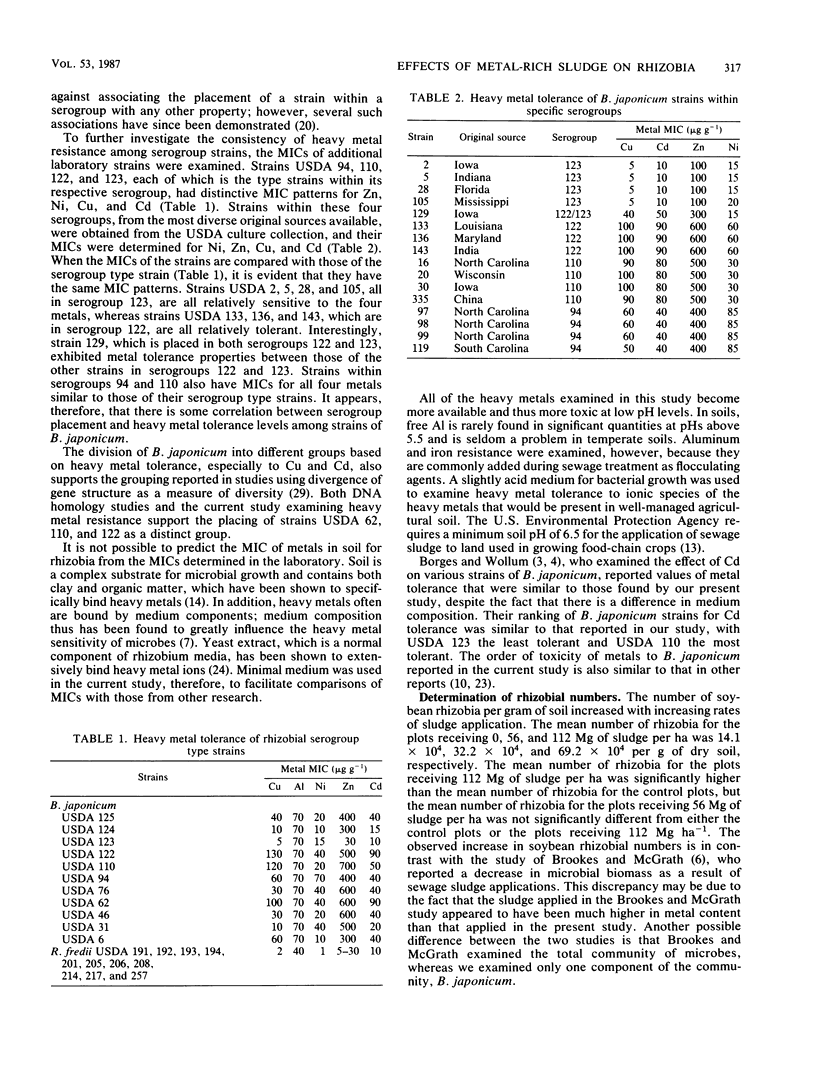
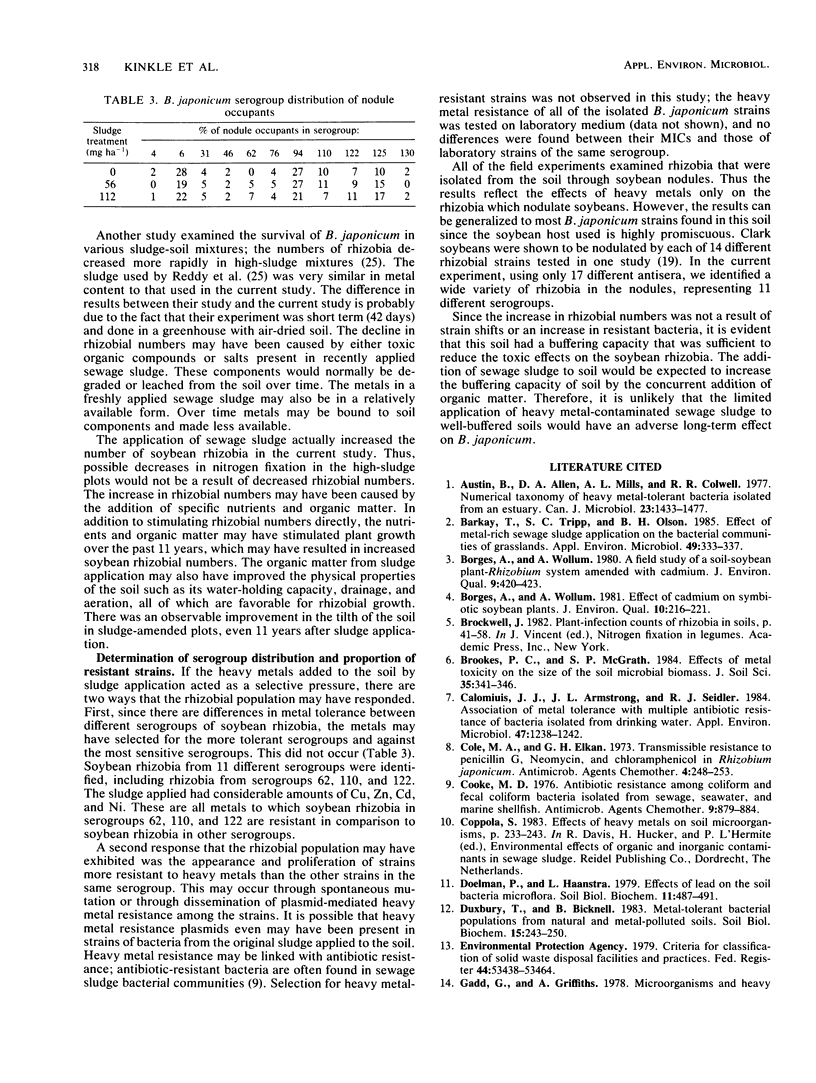
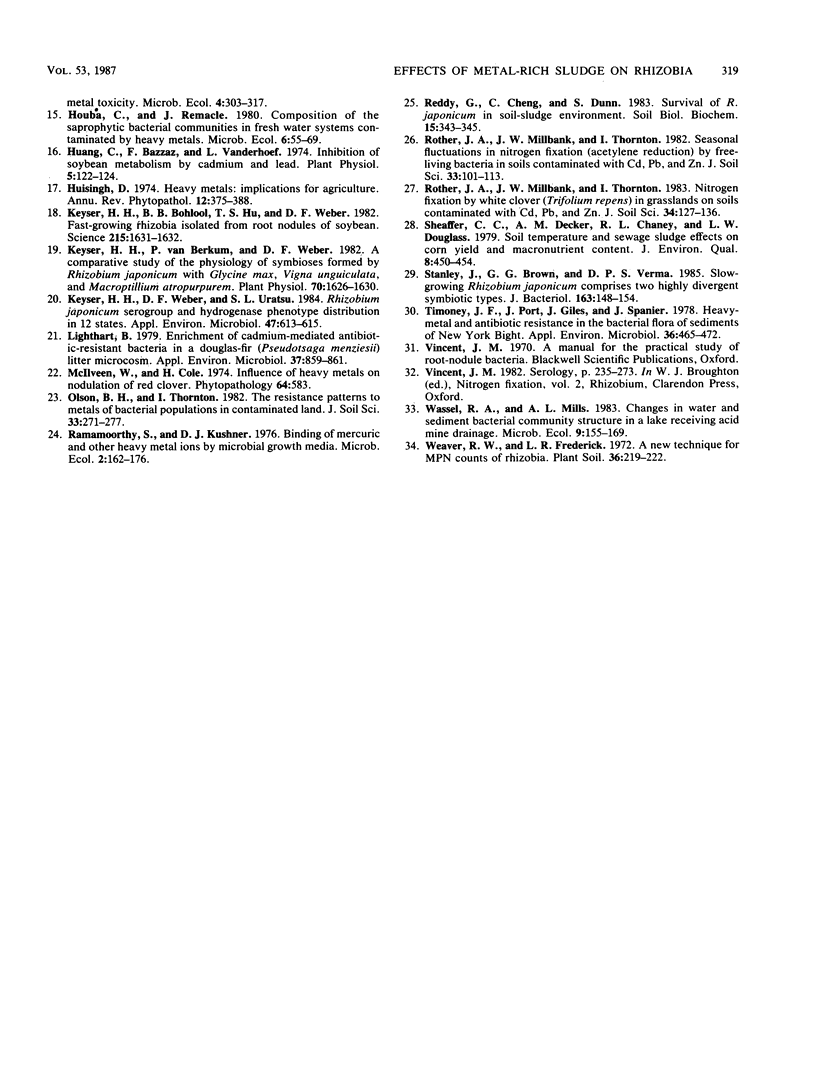
Selected References
These references are in PubMed. This may not be the complete list of references from this article.
- Austin B., Allen D. A., Mills A. L., Colwell R. R. Numerical taxonomy of heavy metal-tolerant bacteria isolated from an estuary. Can J Microbiol. 1977 Oct;23(10):1433–1447. doi: 10.1139/m77-212. [DOI] [PubMed] [Google Scholar]
- Barkay T., Tripp S. C., Olson B. H. Effect of metal-rich sewage sludge application on the bacterial communities of grasslands. Appl Environ Microbiol. 1985 Feb;49(2):333–337. doi: 10.1128/aem.49.2.333-337.1985. [DOI] [PMC free article] [PubMed] [Google Scholar]
- Calomiris J. J., Armstrong J. L., Seidler R. J. Association of metal tolerance with multiple antibiotic resistance of bacteria isolated from drinking water. Appl Environ Microbiol. 1984 Jun;47(6):1238–1242. doi: 10.1128/aem.47.6.1238-1242.1984. [DOI] [PMC free article] [PubMed] [Google Scholar]
- Cole M. A., Elkan G. H. Transmissible resistance to penicillin G, neomycin, and chloramphenicol in Rhizobium japonicum. Antimicrob Agents Chemother. 1973 Sep;4(3):248–253. doi: 10.1128/aac.4.3.248. [DOI] [PMC free article] [PubMed] [Google Scholar]
- Cooke M. D. Antibiotic resistance among coliform and fecal coliform bacteria isolated from sewage, seawater, and marine shellfish. Antimicrob Agents Chemother. 1976 Jun;9(6):879–884. doi: 10.1128/aac.9.6.879. [DOI] [PMC free article] [PubMed] [Google Scholar]
- Huang C. Y., Bazzaz F. A., Vanderhoef L. N. The inhibition of soybean metabolism by cadmium and lead. Plant Physiol. 1974 Jul;54(1):122–124. doi: 10.1104/pp.54.1.122. [DOI] [PMC free article] [PubMed] [Google Scholar]
- Keyser H. H., Bohlool B. B., Hu T. S., Weber D. F. Fast-growing rhizobia isolated from root nodules of soybean. Science. 1982 Mar 26;215(4540):1631–1632. doi: 10.1126/science.215.4540.1631. [DOI] [PubMed] [Google Scholar]
- Keyser H. H., Weber D. F., Uratsu S. L. Rhizobium japonicum Serogroup and Hydrogenase Phenotype Distribution in 12 States. Appl Environ Microbiol. 1984 Apr;47(4):613–615. doi: 10.1128/aem.47.4.613-615.1984. [DOI] [PMC free article] [PubMed] [Google Scholar]
- Keyser H. H., van Berkum P., Weber D. F. A Comparative Study of the Physiology of Symbioses Formed by Rhizobium japonicum with Glycine max, Vigna unguiculata, and Macroptilium atropurpurem. Plant Physiol. 1982 Dec;70(6):1626–1630. doi: 10.1104/pp.70.6.1626. [DOI] [PMC free article] [PubMed] [Google Scholar]
- Lighthart B. Enrichment of cadmium-mediated antibiotic-resistant bacteria in a Douglas-fir (Pseudotsuga menziesii) litter microcosm. Appl Environ Microbiol. 1979 May;37(5):859–861. doi: 10.1128/aem.37.5.859-861.1979. [DOI] [PMC free article] [PubMed] [Google Scholar]
- Stanley J., Brown G. G., Verma D. P. Slow-growing Rhizobium japonicum comprises two highly divergent symbiotic types. J Bacteriol. 1985 Jul;163(1):148–154. doi: 10.1128/jb.163.1.148-154.1985. [DOI] [PMC free article] [PubMed] [Google Scholar]
- Timoney J. F., Port J., Giles J., Spanier J. Heavy-metal and antibiotic resistance in the bacterial flora of sediments of New York Bight. Appl Environ Microbiol. 1978 Sep;36(3):465–472. doi: 10.1128/aem.36.3.465-472.1978. [DOI] [PMC free article] [PubMed] [Google Scholar]


